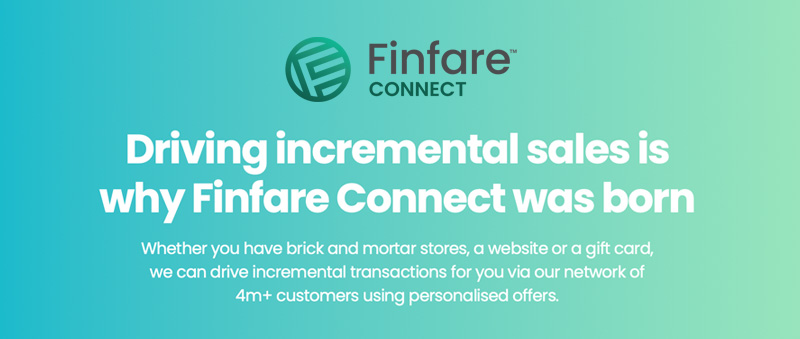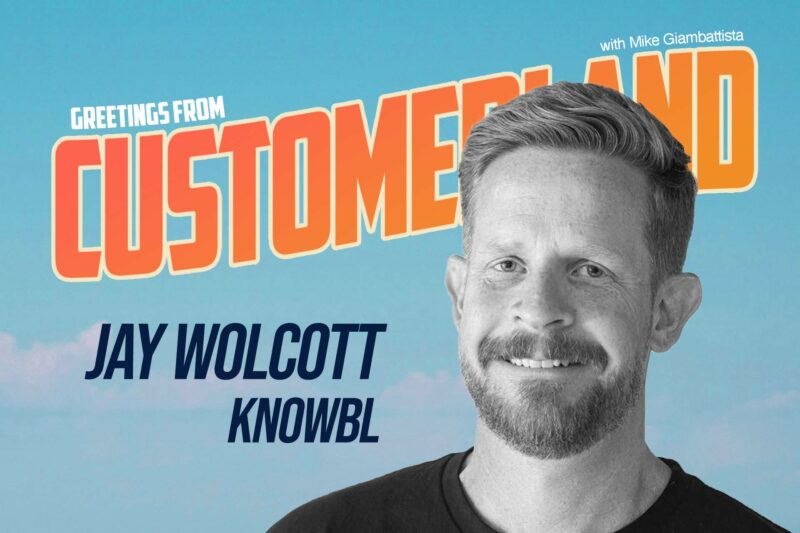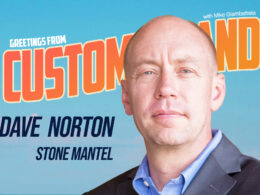A conversation with KNOWBL’s CEO and Co-founder, Jay Wolcott
In this episode, we sit down with Jay Walcott from KNOWBL to discuss the company’s efforts in advancing AI technology for improving customer experience. We move past the era of basic chatbots to explore the development of intelligent virtual agents that aim for more natural and effective interactions with customers. Our conversation covers the evolution from the initial stages of AI to its current capabilities, focusing on creating more engaging and meaningful customer experiences. Jay shares insights into the challenges and breakthroughs in the field, highlighting Knowbl’s role in developing AI that enhances, rather than merely completes, customer interactions.
We also examine the use of large language models in creating what could be considered cognitive brand brains, discussing how Knowbl’s AI platform is making strides in brand communication. By facilitating smoother, more adaptive conversations, these technologies aim to build trust and loyalty without the usual sales pitch. The importance of integrating these systems thoughtfully, with an eye on compliance and risk, is also discussed. Through Knowbl’s experiences, listeners can gain an understanding of how strategic application of AI technology is being navigated in the business world.
This episode of Customerland is sponsored by

Jay Wolcott
And now, if you’re becoming accustomed to interacting with those types of experiences in our everyday life and we go back to a brand experience that’s got a chatbot, that’s making me click through five things. I’m going to get very frustrated with that and say why isn’t this analogous to what I’ve been experiencing within all these other adaptations of where technology and machines can help me find information and get things done? And that’s going to create a sense of urgency for the brands to elevate the role of intelligent assistants to match what is available for us and consumers and all their mediums.
Mike Giambattista
I’m talking with Jay Walcott, who is CEO and, I understand, co-founder of Knowbl, which is a really interesting set of technologies, some of which I’m familiar with, that are doing. The best I can come up with, jay, is that this is kind of brand extension AI-generated personality basis. Terrible explanation of that. You’ve got a much better one, I’m sure, but anyway, thank you for joining me. I really appreciate it.
Jay Wolcott
Yeah, thanks for having me on. Really excited for the conversation, for sure?
Mike Giambattista
So I guess first maybe you could do a better job of explaining what Knowbl does than I just did.
Jay Wolcott
Yeah, no problem. So I think you touched on it pretty well. But just kind of the brief summary that we give folks is we’re entering a really exciting era of intelligent virtual agents and the angle that Knowbl has been taking and is focused on is how can we empower and develop these intelligent assistants for brand and customer interactions, so really focusing on enriching the customer experience for some of the world’s biggest brands.
And we’ve been in the space long enough to kind of know what the pains and the woes were of this first generation of AI and capabilities that it wasn’t exactly meeting customers’ expectations. We were excited that automation had a place in customer experience, but after a number of years I think we began to realize that it really wasn’t meeting the customer’s full potential or excitement of interacting with those, maybe getting a few things done fairly well, but it wasn’t really enriching that experience from a brand and customer relationship. But now, as most of the world knows, there’s a big step change in the form of AI and machine learning that’s empowered by these large language models and pre-trained transformers. That now offers great potential to reimagine that customer experience and the role that a virtual agent could play in that brand and customer relationship. Can you talk?
Mike Giambattista
a little bit about some of those gaps that you recognized over time that, to call it, the first wave of AI was not able to address and fulfill, and then I think that should lead us into some of the ways that Knowbl is actually handling those problems.
Jay Wolcott
Yeah, absolutely. And you know the reality is we’re all consumers. So you know, just kind of imagine going to any of your brand websites, whether it’s a financial institution or maybe even for your cell phone. You know a lot of those experiences when we have questions or we’re trying to get things done, kind of lend themselves to a couple prominent features that have been in play for the last, you know, six, seven, eight years. And the first feature is kind of search. So like go into a website and try searching for something on your own.
Why this isn’t convenient or the way that it doesn’t work real well for consumers today is it kind of puts a burden back on the end user now to have to sift through a bunch of links that might have been derived based on some Boolean search, matching of terms.
So like now I have to filter through and try and figure out where that information might exist that I’ve got. Then we saw this introduction of chatbots, and chatbots are going to help me guide my experience on this digital property. The challenge with the original form of chatbots is that they’re quite restrictive. I mean, it’s really designed in a way that you’re trying to guide somebody down a path with a set of pre-programmed capabilities.
So it wasn’t quite as conversational or natural to go through that experience. It was just kind of like expediting getting them to the things that they might be able to do in a self-service feature in chat. But ultimately a lot of those experiences were essentially a delay in that customer getting the answers that they needed, going through a guided experience and then ultimately needing to wait on hold to get to an agent.
Mike Giambattista
And that’s probably best case scenario for a lot of those. I mean, I’ve personally experienced chatbot situations that just refused to go down a path that would let me answer the questions I had. Instead, I was forced to go down a path that was more profitable and helpful to the people who had the chatbot to the brand.
Jay Wolcott
You got it. And that was kind of the design of these experiences is like let’s touch on the highest volume of things that we can predict or what we want to prompt for those people to be able to flow through. And oftentimes it led to a delay in that customer ultimately getting to an agent to try and get the answer that they needed. And I always like to bring the experience of telephony to it because ultimately you go to a brand’s website, you can’t find what you need, you can’t figure out how to get something done. You go to that contact dust page and all of a sudden now you’re searching for that 800 number saying I’m kind of done with this experience on my own. I’m just going to kind of try and get to the source of truth and talk to an agent to figure this out. And oftentimes brands are introducing automation at the front end of that experience as well. And IVRs I can’t think of a lot of major fans of what an IVR experience was. It’s not an exciting experience. It actually has taught us to try and hit pound, pound, pounder, zero, zero, zero to bypass that experience and get to an agent. So inherently that type of automation wasn’t meeting expectations either. It was designed with some sort of features that hit on the highest probability things of what individuals might be calling about, and oftentimes that automation was really intended for accuracy and routing right. So it wasn’t like, hey, I was trying to get something done, and it’s not the same for every industry, but that again wasn’t a very exciting experience and this first generation of AI that I had a hand in it too, like we’ve all been playing with the same technology.
I started on the digital side. We moved into the telephony side through an acquisition. One of the pains of developing these experiences is we had to teach these machines how to say things. So now, if you’re sitting there with a BILSTN or an RNN framework for building that experience, you now had to have a lot of data, labeling, a lot of training data to teach what that experience needed to be like in order for it to be somewhat accurate. The challenge with that framework was is you could do a few things fairly well, so like if I restricted to five competencies of what I wanted to do and I teach it all of the variations of how people are going to do that. I want to take a long time to build those experiences up, but now it’s very laborious in managing those to make sure that things aren’t breaking underneath so you can have some sort of accuracy in that experience.
So again it goes back to the customer experience standpoint. What is the probability that somebody’s going to have one of those five things that they need to do, but two? It’s a delay if you’ve got to navigate through that experience to get to the thing that you really wanted to do.
And now what we’re seeing in the step change and innovation is now, all of a sudden, we have machines that understand language. So now let’s rethink all of our automation strategies to say, okay, if we’re not limited in the amount of things that we can, that we have to essentially restrict our end users to navigate through.
Now imagine it being limitless and scaling it across all of the knowledge and capabilities that we have as a company. Now it starts to become a really exciting experience, and this is why I get really excited, because we painfully have tried to move that first generation of AI to a point that we knew it wasn’t exciting customers. We knew it was starting to tap out on the volume of things that it could do, and this becomes a welcome relief that now, all of a sudden, we have these pre-trained transformers that now cause us to rethink how we can go about introducing automation, whether it’s an individual experience or a telephony experience, so this is an exciting time, I think. The other thing that becomes very advantageous for brand leaders, for customer service leaders, for folks that are responsible for delivering this in an organization. It’s always hard to push change, especially a pivot. It’s like I’ve spent five years optimizing this chatbot or I’ve spent 15 years building out this IVR. I can’t really imagine breaking that apart now and trying something new.
But the advantage that we have as CX leaders and innovators in this area is that this change is going to be pulled by consumers. Think about how many people have chat GPT in their product, in their pocket. Think about how many times we’re interacting with personal assistants or you know these, these intelligent assistants and different features, whether it’s in our vehicle or it’s in our home. And now if you’re becoming accustomed to interacting with those types of experiences in our everyday life and we go back to a brand experience that’s got a chatbot, that’s making me click through five things, I’m going to get very frustrated with that and say why isn’t this analogous to what I’ve been experiencing within all these other adaptations of where technology and machines can help me find information and get things done? And that’s going to create a sense of urgency for the brands to elevate the role of intelligent assistants to match what is available for us and consumers and other mediums.

Mike Giambattista
We see those kinds of expectations playing out all across the. You know the entire consumer universe, if you will that you know expectations that are developed in one channel suddenly transfer over the next one, and what was okay or acceptable at one point, suddenly, because your competition is doing something, is no longer that way, and I think that’s just exactly what you’re saying with. With IVRs and chat bots, it’s no longer okay.
Jay Wolcott
It’s not. It’s going to. It’s actually going to lead to immense frustration and start to impact the loyalty of those consumers Like it’s. There’s going to be brands out there where it’s easier to get things done. I’m going to move my wallet if that’s the case.
Mike Giambattista
Right, right. So you touched on something a moment ago that I think is is a really big deal, and I’m interested in your thoughts on change management. You know you’re in a, in a position where you’re leading a technology company. That hate the phrase, but it is. You’re a cutting edge technology. You’re, you’re out there, you’re really. You and a handful of other people in that space are really pushing the borders and the edges of what’s possible and practical, and just spent a week or so with a bunch of people in and around NRF here in New York and, yes, everybody’s talking about AI, but the the between the lines of of so many of those conversations were the challenges associated with deploying these, this new technology, because it’s a whole new way of thinking within. You know, I don’t want to say traditional, but even progressive corporate structures, and and you probably fight that battle all the time. So I’d like to hear you know you’ve got your, your technologies, your products, which are pretty fascinating, but how do you present them and get them deployed and embedded within, within companies and standage?
Jay Wolcott
Yeah, it’s a great question, a great topic to focus on. When you’re in the tip of the spear of innovation like this, developing that confidence or that interest to step into something and really materially change the way that you’re doing business is tough, and there’s a lot of brands that it’s inherent in their DNA that they’re going to be more on the cutting edge of innovation. They’ve been developed in a way that they can move fast, they experiment and they get things done and prove out things. Then there’s a lot of brands that wanna be fast followers. I’m not going to be anybody that’s on the bleeding edge of these opportunities and be able to be able to move into something without having guaranteed assurances that it’s going to play out the way that we’re being told it could. Now there’s two things in this piece of innovation that are super exciting. One is I can stand up and experience almost instantaneously for a brand so they can experience what that technology would look like for their end user. So, like now, imagine moving into a demo and envisioning how this technology is going to work, how it’s going to flow conversationally, because, again, go back to the speed and ease of building experiences with these models it doesn’t require a lot of development work or capital expenditures to stand something up. So if you can experience something instantaneously with your content, with your end user experience, it starts to develop that interest in that appetite to say, wow, this is a lot closer to reality, because that demo that this person is showing me is already a far better experience than what my team has been building for the last five years.
But at Knowbl, we are very fortunate that we got a head start on large language models in 2021. We all came out of industry from traditional conversational AI companies with the same pain points, with the same experiences that it takes too long, it costs too much money and it’s not meeting customers’ expectations, unfortunately, from a research perspective. We saw that opportunity to harness the power of these early large language models and said let’s reimagine enterprise conversational AI and we started building in 2021, which made a very difficult year for us in 2022. We’re talking to people about transformers and large language models and they’re looking at us like we’re crazy. I don’t understand what you’re talking about. A transformer and all of those things met a lot of organizations that could see the experience and they’d be like that can’t be real, it’s gotta be fake. I can’t imagine how it could come together like that because the world wasn’t aware yet of the power of these types of models.
Fast forward to November 2022 and all of a sudden, chat GPT hits the world. There wasn’t anybody by December that didn’t know what GPT was in the revolution courts, and that was the fast forward button. All of a sudden, there’s enterprise appetite saying, hey, if that system knows more information about me than anything, I could pull up in my company. We better figure out how to use these. We better figure out what that means to our business. And all of a sudden, Knowbl was on hyperspeed, but we had already been in the market in 2022, in advance of that.
So the second point that we’re able to deliver that builds confidence is we can show them the data. We can show them the data of how the performance of these models can outperform the previous generation of AI and virtual agents and everything that we’ve all been accustomed to. So now, if you couple that with a really profound experience that was easy to pull together and demonstrate to them, it immediately allows them to start envisioning the future and moving from an ideation into like a business case and understanding how that could play. The challenge that comes in the side of those two advantages is now they’ve got to figure out how is that going to work with all of the other infrastructure that we have? How do we begin to shift and move our strategy? Cause you can’t rework your digital strategy overnight, you can’t rework your mobile app, you can’t institute SMS, so now, all of a sudden, it becomes all right. Let’s go with a phased implementation approach. Let’s apply this in areas where it’s the biggest pain point for our customers that we haven’t been able to solve for before. Build trust, build confidence and then continue to extrapolate that experience in the other areas.
Mike Giambattista
So I’d like to take a couple of steps back and if you would Talk to us about what this thing is, what is? Because we’ve talked a lot about the conceptual aspects of GPT and AI and how they’re impacting the marketplace, but, as it relates to Knowbl, the product products that you put out in the marketplace, what does that look like? What exactly is the thing that you’re selling, that you’ve built and sold?
Jay Wolcott
Yeah. So the easiest way to think about it is this is a conversational AI engine. Think of it as a cognitive brand brain that can sit there and empower various end user experiences. So the way that Knowbl delivers this to the marketplace is in the form of a platform. So end users can get into our platform and begin to connect it to their content, which feeds the brain, and then what they can do is connect it to that end user experience.
So we went with a headless concept for our AI engine, meaning if I go out there and I start teaching this engine or teaching this brain all the things about my brand and its experiences and my customer experiences, I can deliver it now in a chat medium, I can deliver it in an SMS assistant, I can put it as a social assistant or I can put it inside my IVR as an IVR assistant so it can plug into all of those different endpoints.
As an industry, we always kind of look at like omni-channel capabilities, right, like we want to invest in things that can feed those customer touchpoints across various areas. So Knowbl followed that very similar strategy that hey, this can power those various end user endpoints but relying on one engine that can be developed and curated to power them all. Now, all of those things are kind of unique in the way that we deliver it for the enterprise. What happens underneath the hood is a very complex. What we’ve developed is a proprietary approach to leveraging these large language models that make it easy for that brand to start stitching those together and delivering them efficiently.
Mike Giambattista
I guess that was my next question, which is, you know, because part of your USP is fast to market, fast to deploy and a large language model at least the generations that I’m familiar with there’s still a considerable amount of training and learning and vetting and designing, if you will. That needs to go in before they’re really market ready. You know, functionally market ready, but it sounds like Knowbl’s approach speeds that up. And is that just a function of the technology underneath it or is that a new way of thinking?
Jay Wolcott
Yeah, so I think one of the things that’s an advantage for us is coming from the traditional conversational AI ecosystem. We began to understand what brands need to pull these experiences together and what we sought to do was leverage advanced technology and techniques underneath that accelerate their ability to do that. So I can go into a brand and extract all the information from their knowledge base they connected into the system that immediately starts feeding the brand important or it starts feeding the brain important information about that brand that it would use as compliance approved content in the end user experience. It’s an accelerator. But what we had to do was replicate all the other challenging things like how do you, how do you, simulate dialogue management? How do you replicate contextual management, because these are multi-turn conversations? You know how do we do multiple queries. You know decomposition all of these things that we knew we’ve already had to address in the long form with traditional or generation one of AI into now this much more modern, accelerated way.
So some of the things that we do under the hood just to kind of give you a preview of one is like think of the traditional call center. You think of an agent interacting with a customer and they go and they follow this set of steps that they need to do.
So if it’s like I need a quote on new insurance, well, as you go through those steps of collecting information, what we can do is we can ingest all of these transcripts to actually start teaching the machine how to build out these sequences that it would need to follow.
So, rather than having somebody sit there and start from scratch and program all of those steps, we’re building an accelerator with this type of technology. You just say, let’s just ingest all of these transcripts and actually have it start pre-populating that. So now you have something to look at and just say, yep, that’s the right workflow, yep, that’s the right data that you pull in, and they all become accelerators underneath the hood. So you really could bring a novice into the platform not somebody that’s deep in conversational AI or a data scientist and they could actually ultimately stitch together these experiences and deploy it on their own. So what we’ve seen is just a massive uptake in that and you start thinking of all of the people inside of an enterprise or a brand. Flipping them into folks that can actually manage these experiences and deploy them Really requires a lot less technical experience to do that.
Mike Giambattista
I’m thinking that, based on this conversation and interacting with some of your colleagues, that the technology that that Knowbl is all about can be deployed in all kinds of situations search for masses and verticals but where are you focusing your efforts right now? Are there any sweet spots or beach heads where Knowbl is stronger and plays better than others?
Jay Wolcott
Yeah, I think the area that we’ve got a significant advantage right now, and significantly, is in direct customer automation with these models. I think there’s a lot of folks that are playing around with generative AI. Even go to IBM Consulting’s predictions for 2024, where is AI going to have a big impact in 2024? They’re referencing a lot of internal use cases, meaning we’re going to use this to help the agent, we’re going to use this in the back office things to help empower the employee. There’s no reference of the end customer experience that can be enabled. One of the reasons for that is because generative AI has risks. When you’re putting that in front of a customer. If it’s got hallucinations or it’s introducing information that the brand doesn’t want, it can get itself in hot water very fast. We’ve seen this where people will point out to us well, this brand just did something with generative AI and then quickly it disappears because it probably crossed wires with somebody in compliance saying how could you allow something to say that what’s novel to Knowbl’s approach is restricting and eliminating generative AI in runtime.
Now, if you think of it being used for direct customer interaction, it’s 100% compliance approved because the content in the system is only the information that that brand has already accepted and endorsed and it doesn’t offer that risk of the generative AI feature inventing something like possibly suggesting a competitor on their website with all the information that it has in its knowledge base.
We’ve seen people try and replicate what Knowbl is doing. There’s a prominent approach out there called RAG, which is Retrieval Augmented Generation. Everybody starts talking about RAG and now they’re talking about RAG with guardrails so that we can protect the accuracy of information. But guardrails they’re not guarantees and there aren’t a lot of brands in this compliance heavy environment that are going to say, hey, we’re okay accepting the minimal risk that’s out there related to these guardrails. So Knowbl is beginning to appease those compliance teams. So we’re definitely winning in that direct customer automation with this much more modern architecture. Now, as a emerging organization, we can’t be all things to all industries when it comes to our go-to-market. So we’ve been very focused on financial services, insurance, automotive and retail and we’ve been very successful in being able to capture some of the leading innovative brands in each of those areas to be able to accelerate what type of results we can see for each of those vertical specific applications of customer automation.
Mike Giambattista
You mentioned a few minutes ago that you decided to approach Knowbl from a headless standpoint, that it could operate with virtually any existing stack. Having said that, though, are there technology partners that Knowbl is maybe more natively designed to work with, or is it truly anything you can think of? Apr APIs will have fun together.
Jay Wolcott
Yeah, we have found a concentration of folks inside the enterprise that are tools that we need to be integrated with to really deliver that seamless experience. But the concept behind headless is where we’re going to see a lot of these enterprise platform decisions going in the future. We’re going to be able to move to much more connected systems, many things moving to the cloud, including even our telephony solutions moving into these cloud contact centers, all of those things kind of empower components that can work well with each other. And Knowbl made the conscious decision to say, look, we don’t need to provide the chat interface for the website, there’s a lot of companies out there that already have it, because they also have to provide the agent desktop that’s used for the live agent.
We’re just going to work within those. So what Knowbl’s done is developed all of these preexisting connectors inside of that platform. So now the brand comes in, we’re not developing it from scratch. They’re able to just fire up their sales force. They’re able to fire up their HubSpot, twilio, whatever it is. It’s already got a connector and then that can be customized connection.
So we actually look at the Knowbl platform as having two bookends, meaning it’s very easy to integrate against existing systems. One side of it is all the content that’s going to be ingested into the platform. How does it learn about the brand and how does it stay synced up with the source of truth? Think about knowledge bases, CMS systems, all these various things that can be fed when content lives in that company, into the engine. And then on the other bookend is all of the applications where that experience is going to be delivered, so chat, SMS, IVR, all of that. So that was kind of the strategy that we took, because we didn’t want to be in a procurement cycle where it’s like, oh, they’re evaluating us on our agent chat capabilities. That’s not our area of expertise. Right Area of expertise is in orchestrating conversational excellence, independent of whatever they have on both of those bookends.
Mike Giambattista
Regardless of the technology that delivers it.
Jay Wolcott
You got it. Innovation isn’t just about replacing what doesn’t work today. So, as we think about the ways that we’re driving value to brands, to brand leaders, into the customer experience, part of it is saying this is going to be a better experience than what you’re delivering today. The other side of the coin, and where we get folks excited about it, is reimagining the art of the possible. So now, where can innovation be an accelerator? Rethink the ways that we’re delivering experiences, and I oftentimes reflect back to that website again.
You know, 25 years ago we all started moving to brand websites and knowing how to navigate brand websites. Go to the way back machines online and look at any institution from 25 years ago to where we sit in 2023. The features are all the same. You got a home page, you got a product page, you got service page, you got a contact page. Even in an e-commerce situation, we’ve been taught as consumers to go through filters. You select the filter, you down, select, you keep moving through your filters to get to what you want.
All of these things have been established and not challenged. Yet if I’m a consumer and I go into one of the best retail experiences, somebody walks up to me and says how can I help you, and that individual in a retail experience helps, guide you through that store to get done what you need to get done and some of the best stores whether it’s a small town hardware store and you walk in and say, well, I need a gallon of paint, they not only help you mix the paint, they now ask you well, do you need brushes? Would you like to you know? Get advice on what type of roller to use with that type of paint? They take you to that next step of your journey.
We’re in a digital ecosystem. It’s very flat and transactional, and I think now we as brands need to reimagine what conversational commerce could look like. I don’t want to go to an automotive website anymore and have to set all of these filters to find out that that car is not available that I want. It’d be like going into a dealership and just asking that salesperson. I’m actually looking for an SUV that gets 30 miles per gallon and is all wheel drive, and do you happen to have one that’s in black and available today? Just like? I would say that to somebody who should be able to interact with these digital ecosystems from a brand perspective, not just for commerce and pre-sale, but even in post-sale, not having to put that burden on the user to move through those systems in a way that that brand thought was comfortable, but let’s move it into a way that’s convenient for customers and something that excites them in replicating that retail or in person experience.
In a much more natural way that humans actually think, communicate and expect, you got it, and I think the brands that really begin to lean in on reimagining that bringing that type of value and excitement to their end users are going to get great fanfare, they’re going to get great response from their end users and I think they’re really going to be leading the competition in the long run. It’s kind of like the early days of e-commerce, right? I mean, go back to Kmart and Sears turning their back on. Well, are people really going to buy all this stuff online and then put the revenue of those two companies against eBay and Amazon during that same cycle? We have to move with what’s convenient for the customers, and I think we as customers need to look at all of these existing systems and recognize it’s time for an overall change.














